How Blue Can You Get?
| Blues Notes |
How Blue Can You Get?
Johnny Moore's Three Blazers was a popular African-American vocal group in the 1940s and 1950s. In 1946, they had their greatest success with "Driftin' Blues", sung by Brown. The group followed up the success of "Driftin' Blues" with several other big R&B hits, including "Sunny Road" (1946), "New Orleans Blues" (1947), and "Merry Christmas Baby" (1947). In 1949, Johnny Moore with his brother, Oscar Moore, on guitars, Billy Valentine on piano and vocal, and Johnny Miller on bass recorded "How Blue Can You Get" in the West Coast blues-style. It was included on the jazz and blues compilation album ‘Singin' the Blues’ (1960). In 1951, Louis Jordan recorded the song using a big band arrangement.
How Blue Can You Get?
"How Blue Can You Get" is a slow twelve-bar blues composed by Leonard Feather. Words are credited to Jane Feather, his wife.
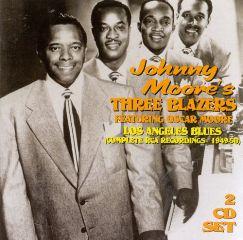
Johnny Moore's Three Blazers, 1949
Leonard Geoffrey Feather (1914, London, Eng.— 1994, Encino, Calif., U.S.), British-born American jazz journalist, producer, and songwriter whose standard reference work, ‘The Encyclopedia of Jazz,‘ and energetic advocacy placed him among the most influential of jazz critics. Described by jazz great Louis Armstrong as "one cat that really knows what's going on," and by Leonard Bernstein as an author who "opens one's eyes to a perspective view of jazz that is astonishingly new and rich," Feather's creative background brought musical authenticity and a well-informed viewpoint to his criticism, which appeared regularly in the Los Angeles Times.
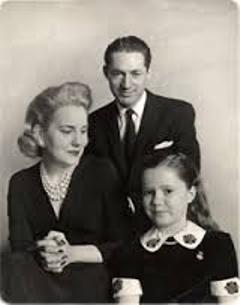
Jane, Leonard & Lorraine Feather
He was also, however, an artist who had a significant impact on jazz. He described himself as a modestly talented clarinetist and pianist, but he was a skilled and busy songwriter and composer. As a producer and musical entrepreneur, Feather was instrumental in the hiring of Benny Carter for the BBC Dance Orchestra in the early 1930s. In the next decade, he produced and composed for sessions by Armstrong, Carter, Duke Ellington and Dizzy Gillespie, and he wrote arrangements for Count Basie.
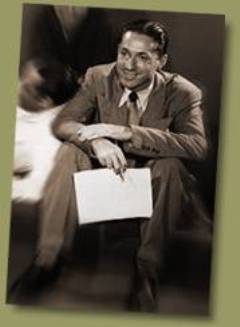
Leonard Feather
Feather also produced the debut recordings of Sarah Vaughan, George Shearing and Dinah Washington. His "Evil Gal Blues," "Salty Papa Blues" and "Blowtop Blues" launched Washington's career. In the mid-1940s, he was responsible for establishment of the annual Esquire jazz polls, and in 1945, he produced the first record album chronicling the work of female jazz musicians.
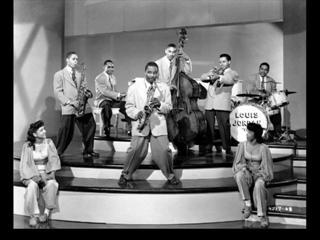
Louis Jordan and His Tympany Five
With the publication of "Inside Be-Bop" (1949), and the release of the initial "Encyclopedia of Jazz" (1955), Feather became established as an important jazz journalist, commentator and critic. Subsequent writings included further editions of the "Encyclopedia" (with Ira Gitler), "From Satchmo to Miles," "The Passion for Jazz" and "The Jazz Years: Earwitness to an Era."
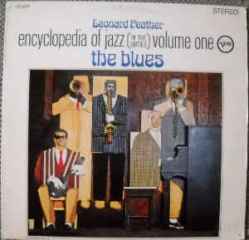
Leonard Feather - Encyclopedia of Jazz Vol.1, 1955
"How Blue Can You Get", his biggest hit was very popular song for B.B. King. Feather described the song as having "the type of intimate instrumental setting heard in so many best blues vocal performances of the 1940s". B.B. King first recorded the song as "Downhearted", which was included on his 1963 ‘Blues in My Heart’ album. The song is performed at "a steady, stately pace, its groove punctuated by B.B.'s stinging runs and wailing, sustained notes", according to King biographer David McGee. King later re-recorded the song as "How Blue Can You Get" and ABC-Paramount Records released it as a single in 1964.
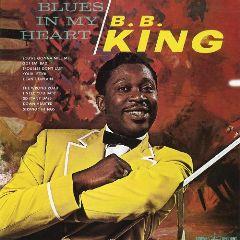
B.B.King - InMy Heart, album with "Downhearted"
"How Blue Can You Get" reached number 97 on the Billboard Hot 100 pop chart in 1964 (Billboard's R&B chart was suspended at the time). The song became a fixture in King's live shows "with enough good punchlines for B.B. to keep it in his act for decades". A live version of the song first appeared on the ‘Live at the Regal’ album recorded in Chicago in 1964. Since then, live versions of the song have been included on several live B.B. King albums.
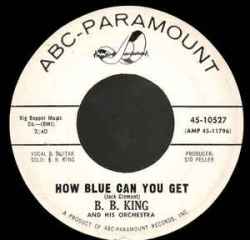
B.B.King - How Blue Can You Get, ABC-Paramount single
The song has been recorded by many, many several blues and other artists, including Duke Ellington, Albert Collins, James Cotton, Howard Tate, Magic Slim, Fleetwood Mac, Jeff Healey, Cyndi Lauper and Greg & Duane Allman. King also performed the song in both the Blues Brothers 2000 movie as well as on the movie soundtrack, along with a medley of other artists credited as "The Louisiana Gator Boys", a rival blues supergroup fronted by King's character, Malvern Gasperone.
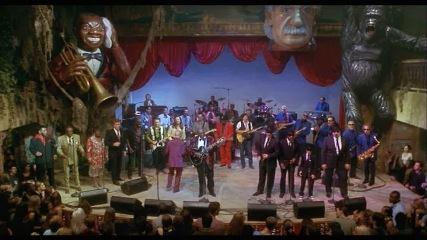
The Louisiana Gator Boys
How Blue Can You Get, lyrics
Ive been down hearted baby Ever since the day we met I said ive been down hearted baby Ever since the day we met Our love is nothing but the blues Baby, how blue can you get? Youre evil when im with you, baby And youre jealous when were apart I said youre evil when im with you, baby And youre jealous when were apart How blue can you get baby The answer is right here in my heart I gave you a brand new ford But you said: i want a cadillac I bought you a ten dollar dinner And you said: thanks for the snack I let you live in my pent house You said it just a shack I gave seven children And now you wanna give them back I said ive been down hearted baby Ever since the day we met Our love is nothing but the blues Baby, how blue can you get?
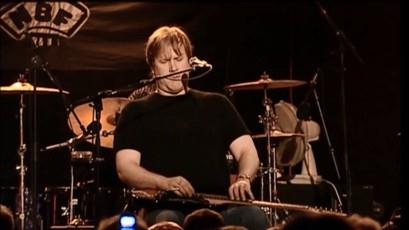
Jeff Healey play How Blue Can You Get?
B.B. King - How Blue Can You Get (Live at Farm Aid 1985)
Last Updated (Saturday, 02 September 2017 10:45)
